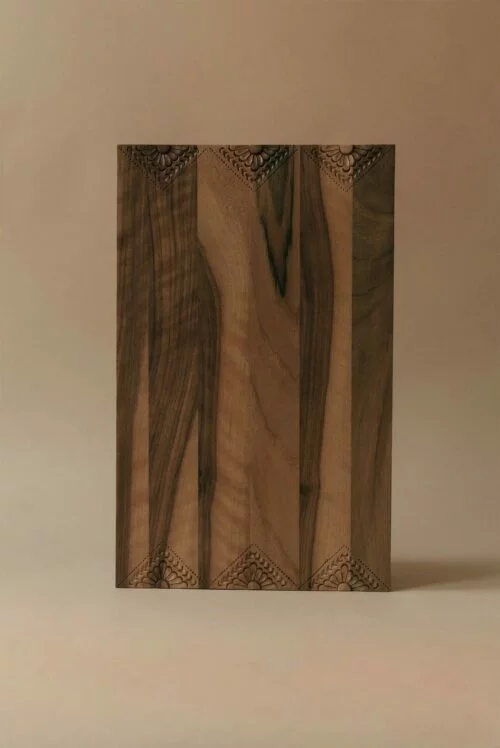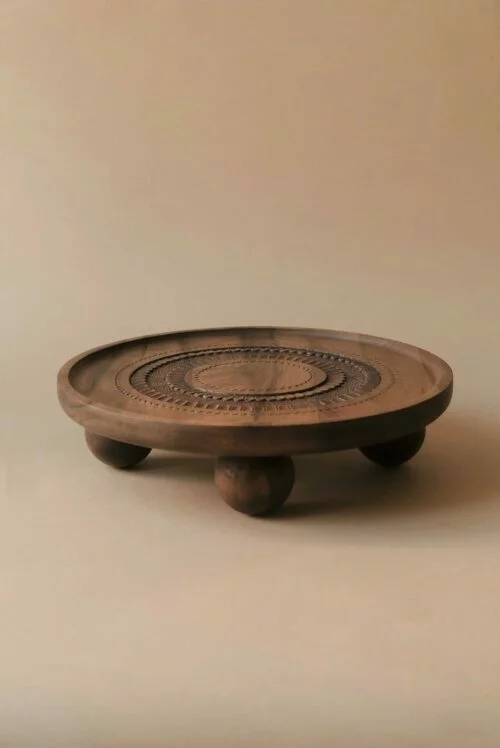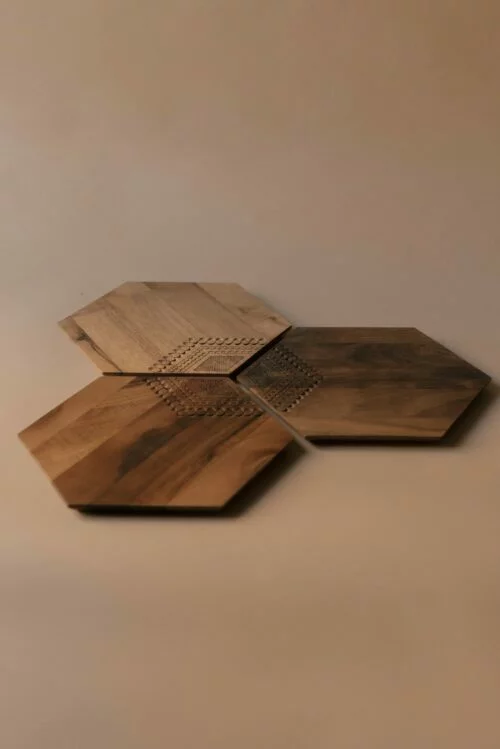Konjic Woodcarving Tools: Instruments That Craft Art
Konjic woodcarving is a traditional art form that originated in the town of Konjic in Bosnia and Herzegovina. This sophisticated and delicate craft has been passed down through generations, and today, it continues to captivate people like myself with the beauty and heritage it carries. In this article, I want to teach you about the tools I use to create stunning pieces at WAGA that embody the spirit of Konjic woodcarving.
Understanding the Art of Konjic Woodcarving
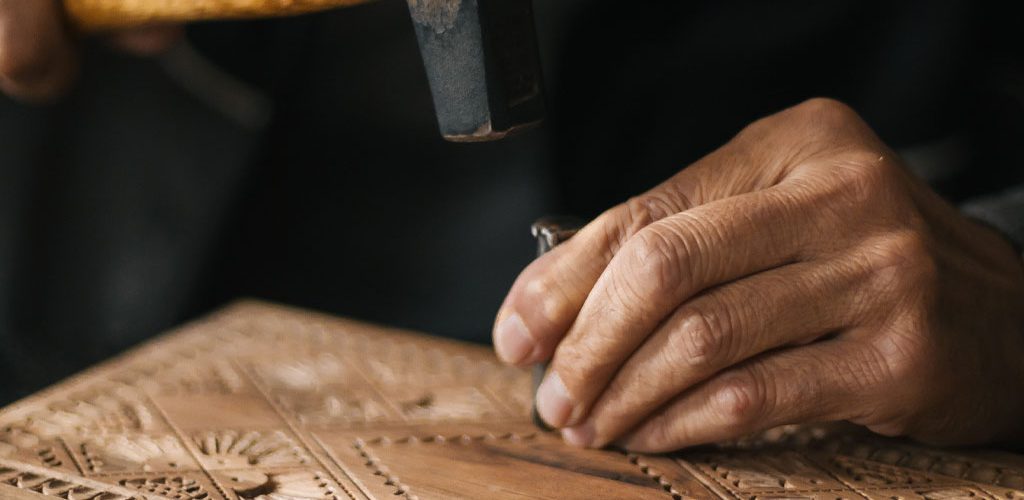
Before we dive into the tools we use in Konjic woodcarving, it is important to understand the history and cultural significance of this art form. Woodcarving has a long history in Konjic, dating back to the Ottoman Empire. This practice isn’t just a form of artistic expression; it is deeply rooted in the cultural identity of our region. The detailed patterns and motifs we carve represent traditional symbols and stories, reflecting the rich history and heritage our culture carries.
An Overview of Konjic Woodcarving Tools
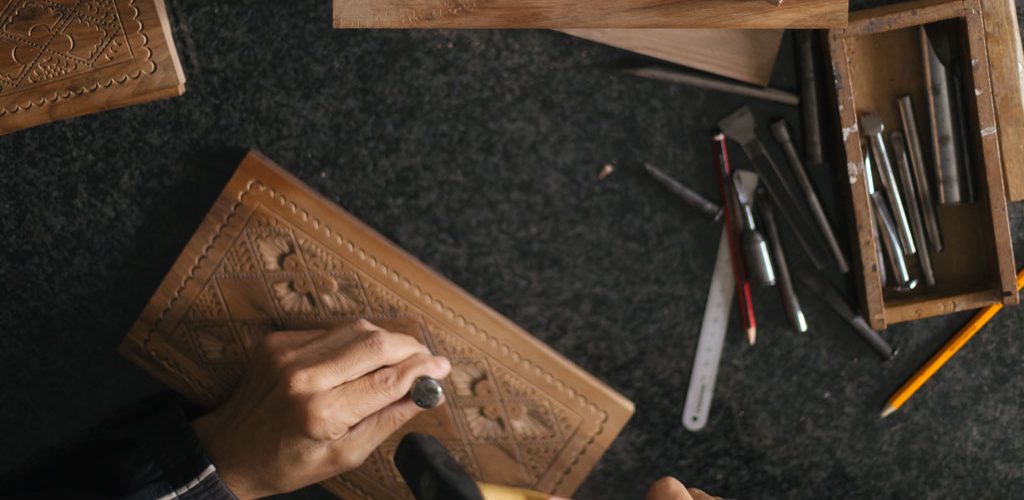
It’s important to note that the tools used in this art form aren’t just instruments but extensions of an artisan’s skill and creativity. They enable us to transform a simple piece of wood into a work of art that reflects the rich cultural heritage of the Bosnian people.
Tools I Use When Carving My WAGA Creations
- Hammer: Hammers are essential in the whole woodcarving process, as they support each carving being made.
- Gouges: Gouges are curved chisels used for shaping and removing wood.
- Chisels: Chisels are sharp-edged tools used for intricate detailing and fine carving.
- V-tools: V-tools have a V-shaped cutting edge and are ideal for creating sharp lines and complex designs.
Traditionally, these tools are carefully made by craftsmen, and they are often passed down through families or between masters and apprentices. The handles are specifically designed to provide comfort, so they allow me to hold them for hours of long carving. The blades are made from high-quality steel to ensure sharpness and precision, so that when I carve, I can control the depth and detail of each carving.
the tools at waga carry stories of century long heritage and use
The Role of Each Tool in Our Process
Each tool I use plays a vital role in our process. When I select a tool, it’s not just a matter of practicality but also a reflection of my artistic vision. The choice of the tool, the angle at which I hold it, and the pressure I apply all contribute to the final piece’s unique character and beauty.
Hammers
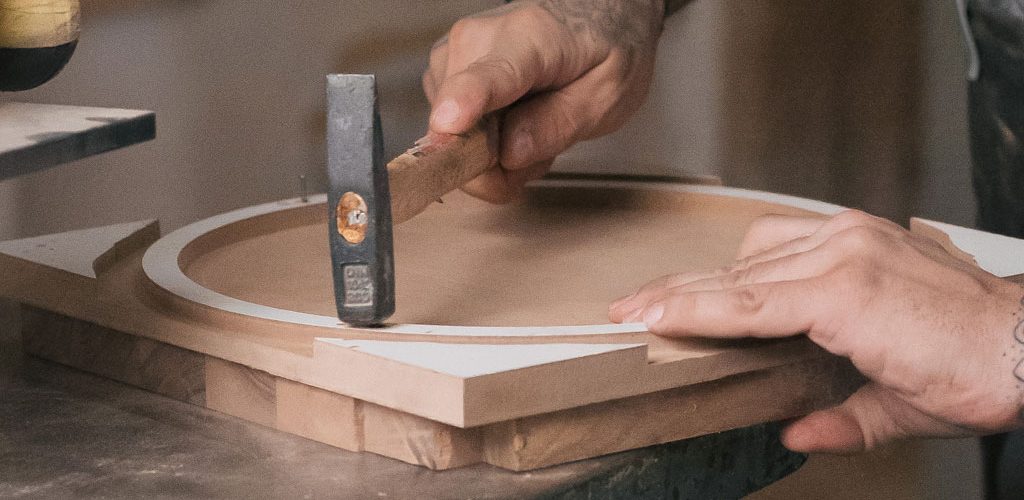
Hammers play a crucial role in our woodcarving process by driving chisels and gouges into the wood with controlled force. The hammer’s weight and balance allow me to exert the right amount of pressure needed to achieve the desired depth and detail in my carvings. Using a hammer correctly requires skill and precision, as the force must be evenly distributed to avoid damaging the wood or the tools.
Gouges
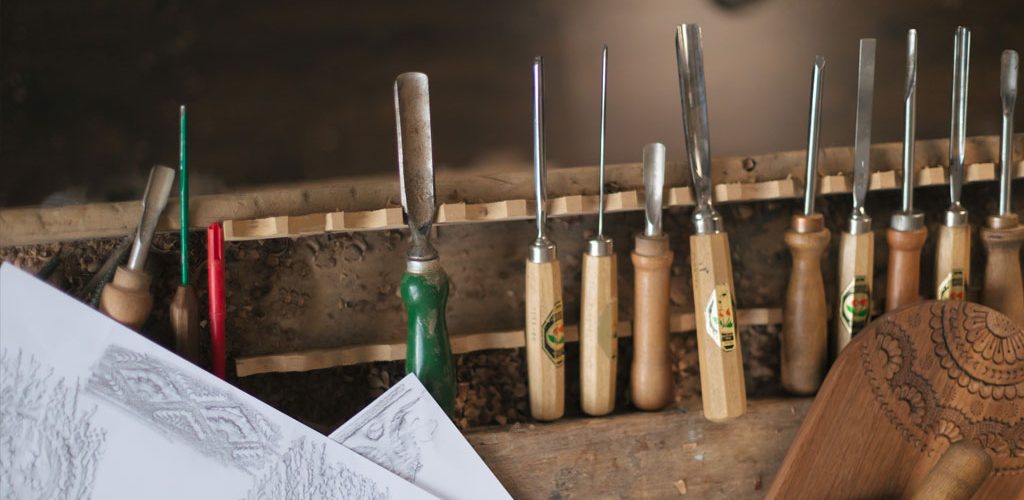
Gouges are essential due to their versatility and efficiency in shaping and hollowing out wood. The curved blade of the gouge allows me to remove large amounts of wood quickly, creating the basic form of the piece. Different gouge shapes and sizes enable me to achieve various depths and contours, which are crucial for the complex designs characteristic of Konjic woodcarving. The gouge’s role is foundational, setting the stage for the detailed work that will follow.
Chisels
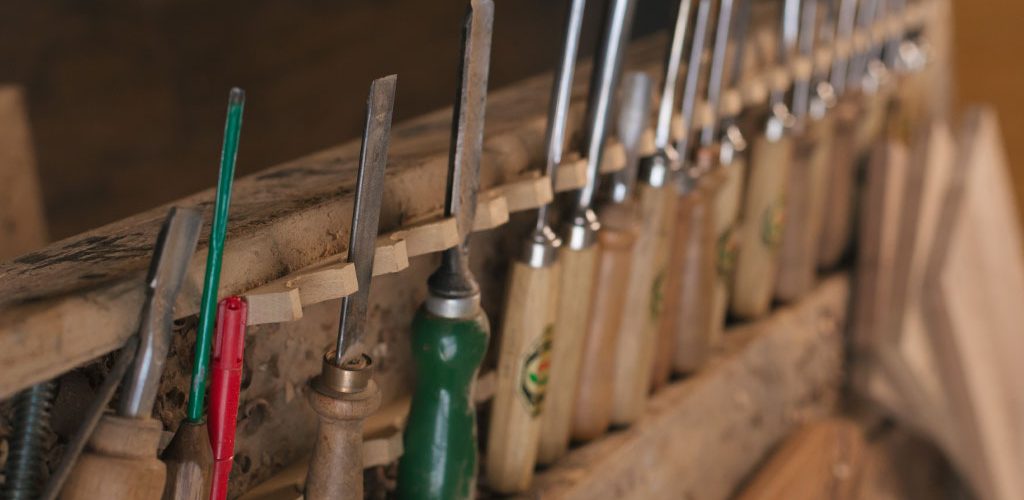
With their flat edges, chisels are perfect for refining shapes, carving fine details, and creating clean, sharp lines. They are particularly useful for making precise cuts and delicate patterns that embody the aesthetic of Konjic woodcarving. I use chisels to add depth and texture to my WAGA creations, enhancing the overall design and bringing the wood to life.
V-Tools
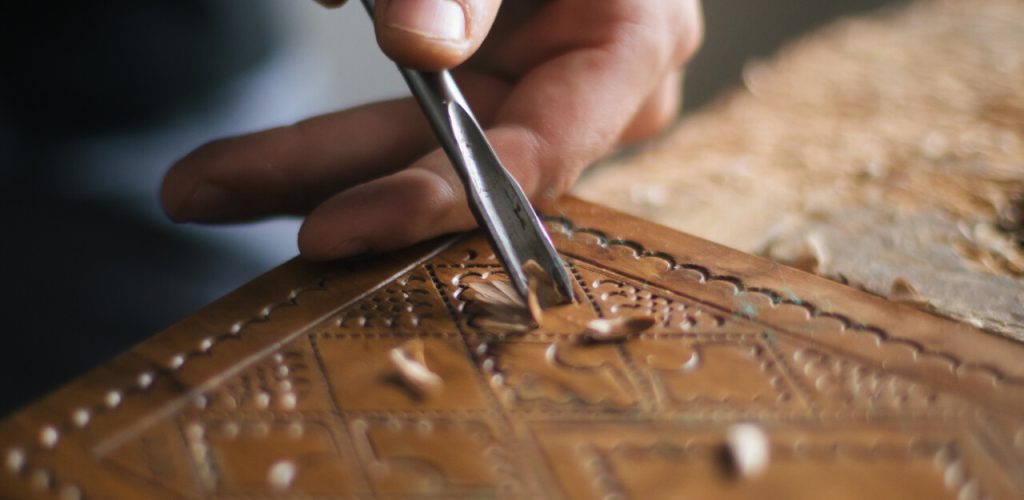
V-tools are used for creating the sharp, clean lines that are the trademark of Konjic woodcarving. The V-shaped cutting edge allows me to make precise cuts, but it’s particularly effective for outlining and defining detailed patterns. The V-tool’s ability to produce crisp lines makes it invaluable for highlighting and emphasizing the beautiful and detailed motifs found in our designs.
How I Maintain My Woodcarving Tools
Proper maintenance of woodcarving tools is important for their performance and longevity. To ensure that these tools continue to deliver exceptional results, I take special care of them after each use.
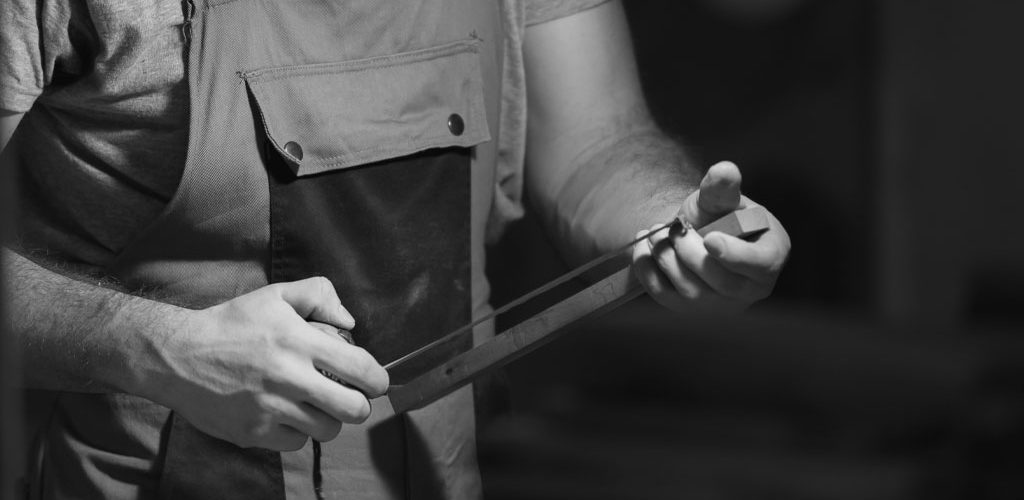
Cleaning and Storing the Equipment
After each session of woodcarving at WAGA, I clean my tools thoroughly, removing any wood residue by gently wiping them with a damp cloth. Once dry, I apply a thin coat of oil to protect the metal parts from rusting. Finally, I store my woodcarving tools in a cool and dry place, away from moisture and extreme temperatures, to ensure they remain in optimal condition.
Tips for Long-Lasting Tools
To prolong the lifespan of my woodcarving tools, I keep a few additional things in mind. I regularly sharpen my tools by using a sharpening stone to prolong their carving abilities. Additionally, with each use, I avoid excessive force, as this can cause unnecessary wear and tear.
Safety Measures When Using Woodcarving Tools
Konjic woodcarving requires precision and attention to detail, but it is equally important to prioritize safety while working with these woodcarving tools.
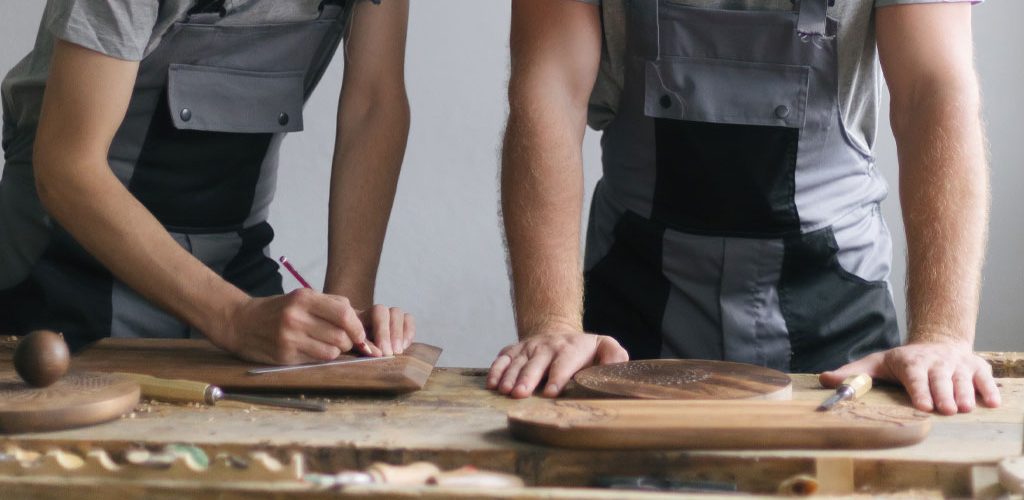
Essential Safety Equipment I Use
I always put on proper safety equipment before embarking on any woodcarving adventure. I use safety goggles or sometimes even a face shield to protect my eyes from flying wood chips. Additionally, I wear a sturdy apron and gloves to protect myself from potential cuts and splinters, while my dust mask helps filter out tiny particles.
Safe Handling and Usage of Tools
When I use my woodcarving tools, I maintain a firm grip and am mindful of my surroundings. It’s necessary to always carve in a well-lit area and also ensure the work surface is stable and secure. The best advice I can give is to take time and work at a pace that allows careful control of the tools as well as an opportunity to find mindfulness during the practice.
Conclusion
Konjic woodcarving is not just a skill; it is an art form that embodies the rich cultural heritage of Bosnia and Herzegovina. Equipped with the knowledge of essential woodcarving tools and our heritage, we’re able to create these stunning treasures at WAGA. Each tool, whether a gouge, chisel, V-tool, or carving knife, plays a crucial role in bringing these beautiful pieces to life.
Explore more about our process and the cultural significance behind each WAGA piece we create.
